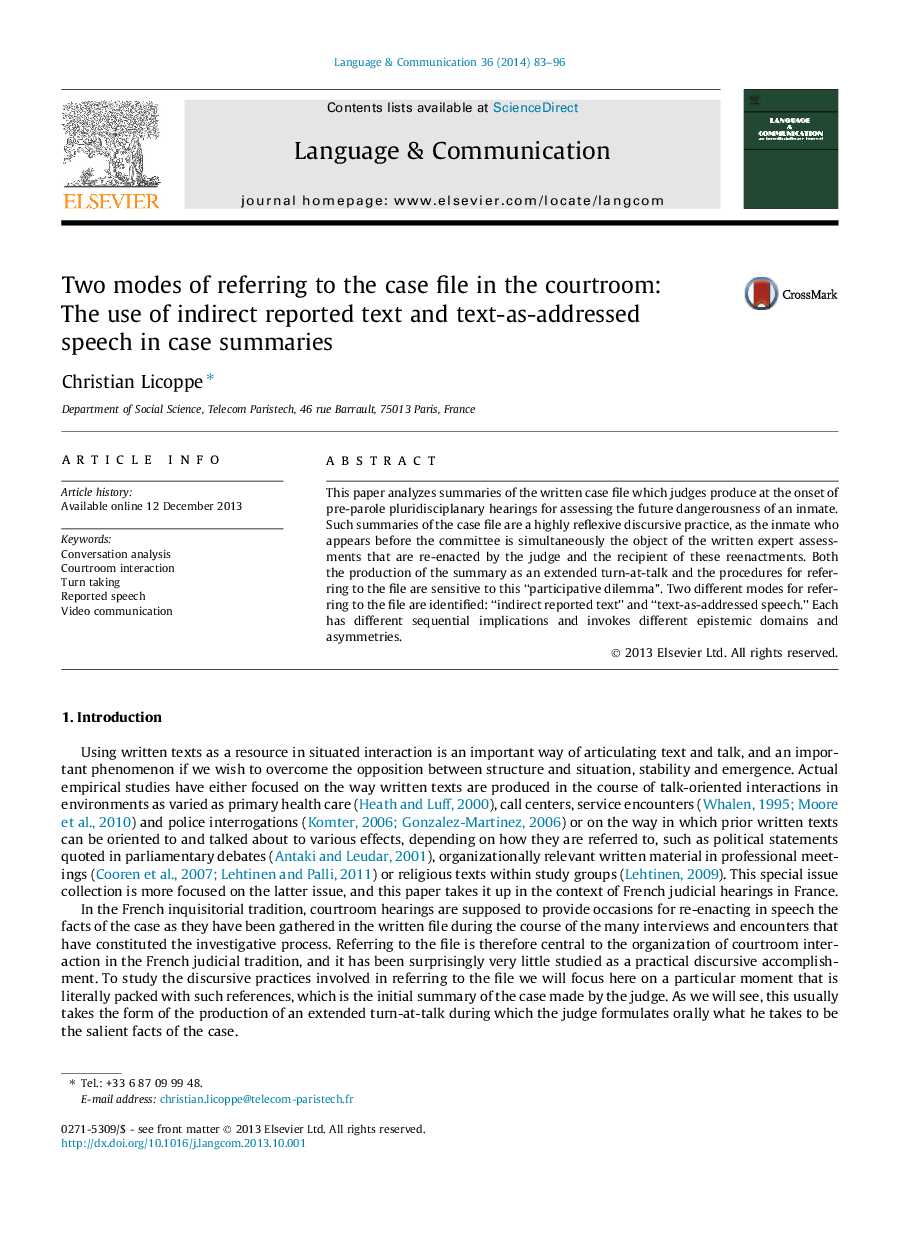| Article ID | Journal | Published Year | Pages | File Type |
|---|---|---|---|---|
| 934840 | Language & Communication | 2014 | 14 Pages |
•Initial summaries of the case reflexively assess the defendants.•They are made of “B-events” utterances, which strongly project confirmation.•Recipients must choose between responding or refraining to do so.•There are two modes of quoting the file with distinct sequential implications.•Their use shapes the ways in which the voice of the defendant may be enacted in court.
This paper analyzes summaries of the written case file which judges produce at the onset of pre-parole pluridisciplanary hearings for assessing the future dangerousness of an inmate. Such summaries of the case file are a highly reflexive discursive practice, as the inmate who appears before the committee is simultaneously the object of the written expert assessments that are re-enacted by the judge and the recipient of these reenactments. Both the production of the summary as an extended turn-at-talk and the procedures for referring to the file are sensitive to this “participative dilemma”. Two different modes for referring to the file are identified: “indirect reported text” and “text-as-addressed speech.” Each has different sequential implications and invokes different epistemic domains and asymmetries.
